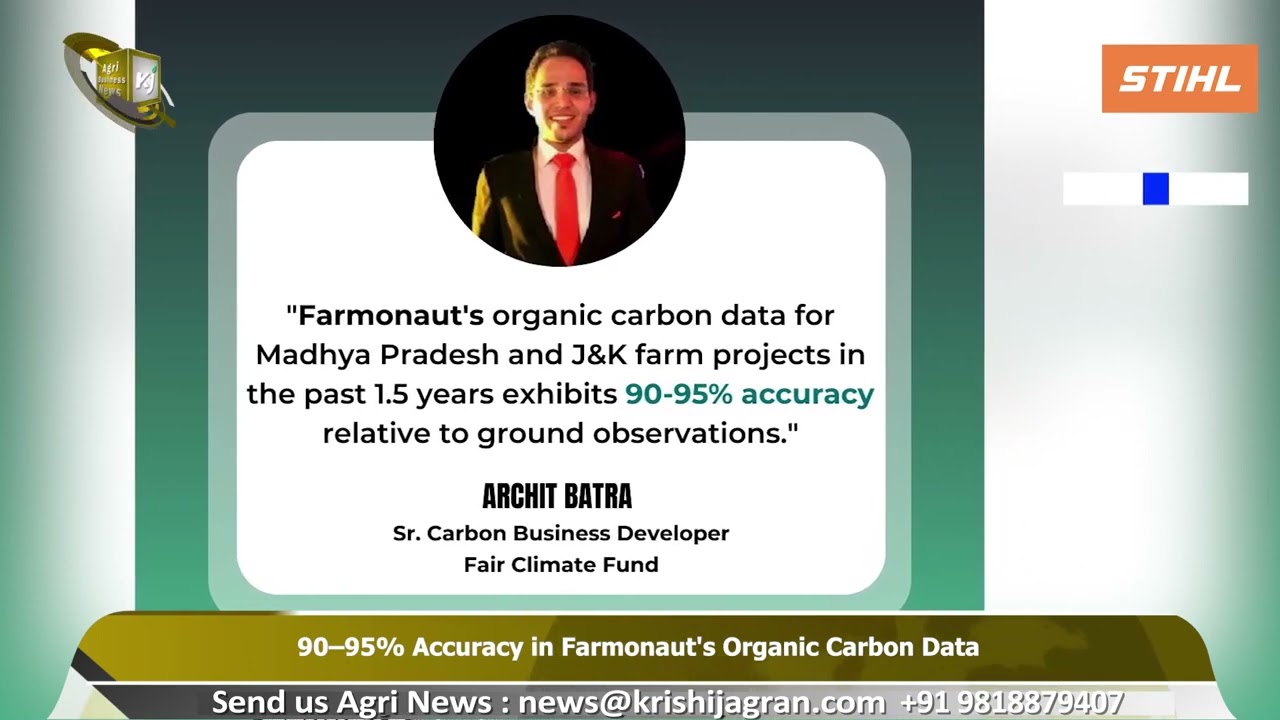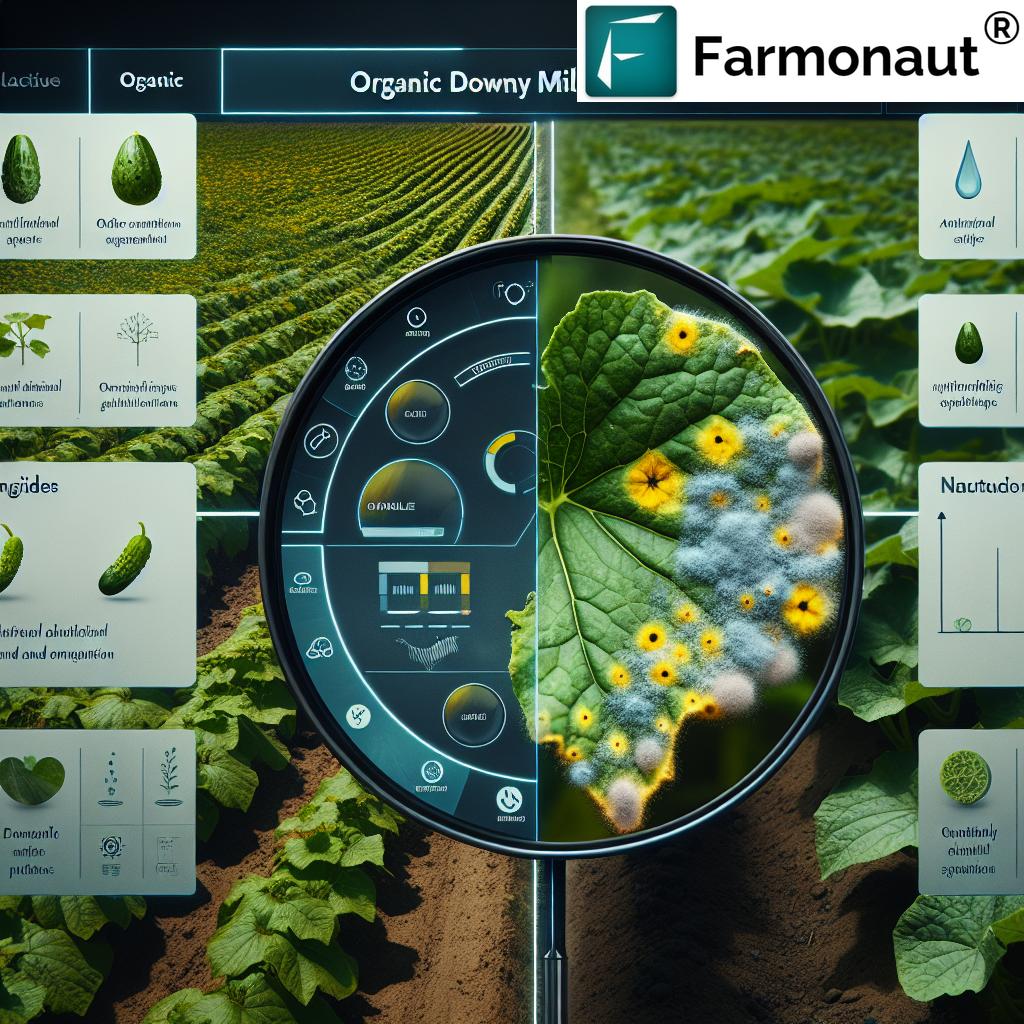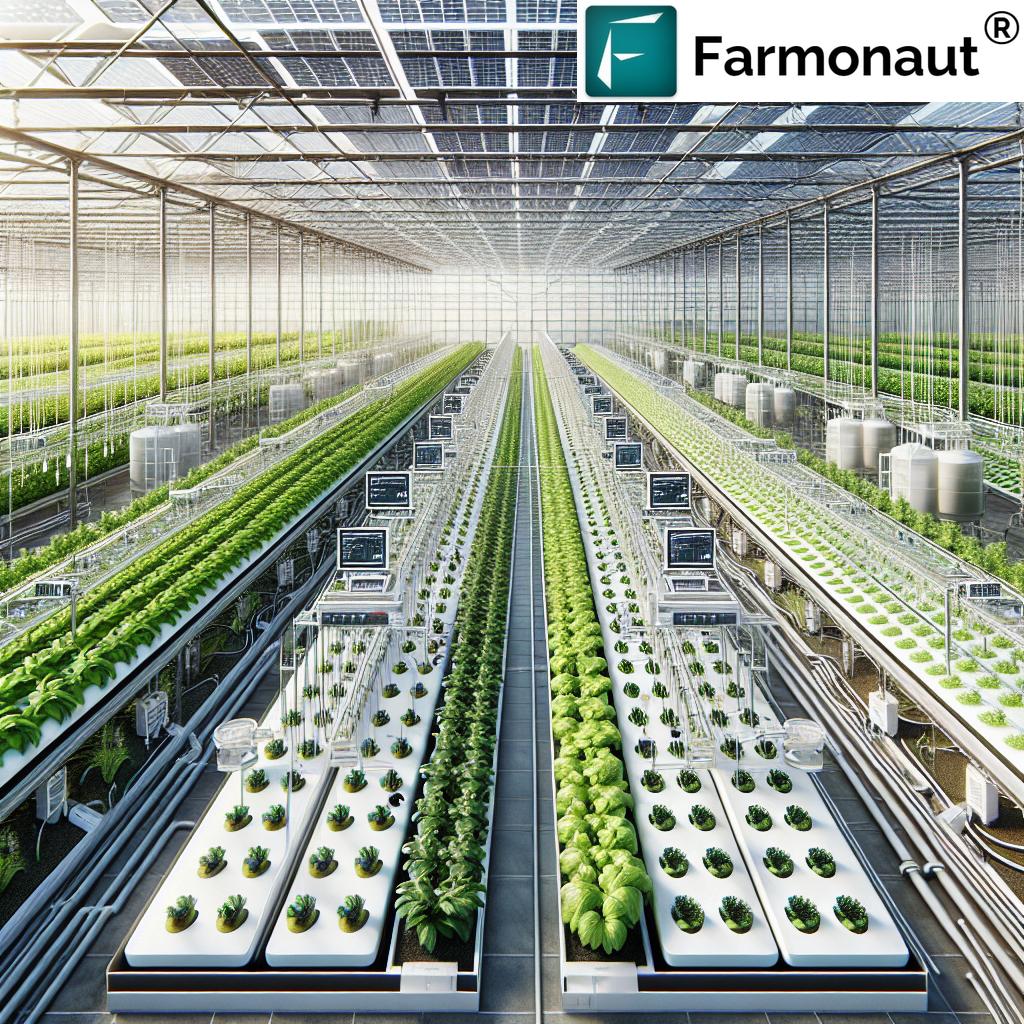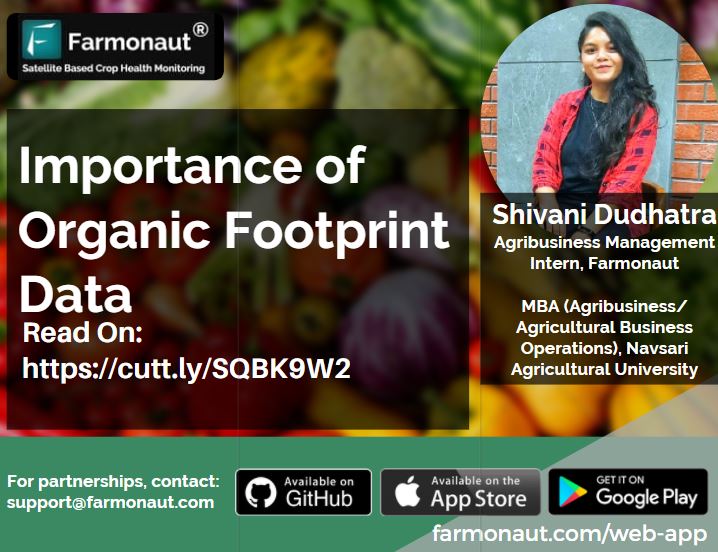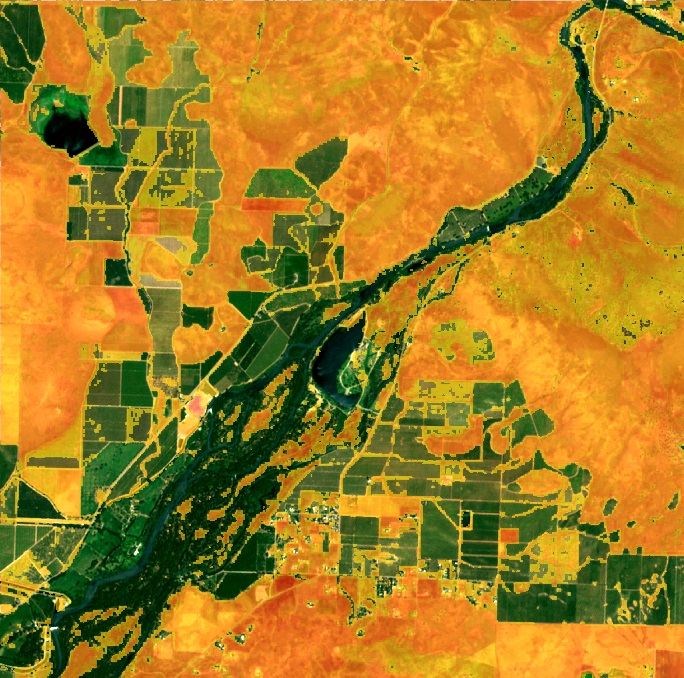Soil Health Improvement: 10 Shocking Secrets Revealed!

“Cover cropping can increase soil organic matter by up to 21% in just five years, enhancing soil fertility and structure.”
- Primary focus keyword: Soil health
- Secondary keywords: Cover cropping benefits, crop rotation for soil health, organic matter for soil, reduced tillage farming, biodiversity, nutrient management, and more.
- Theme: Sustainability & Environment—Eco-friendly and sustainable agriculture practices for improving soil fertility, resilience, and long-term productivity.
Table of Contents
- Understanding Soil Health
- The Cornerstone: Soil Health and Its Key Indicators
- Comparison Table—Sustainable Practices for Soil Health Improvement
- Soil Health Improvement: 10 Shocking Secrets Revealed
- Leveraging Technology: Farmonaut’s Innovative Solutions for Monitoring & Managing Soil Health
- FAQs About Soil Health Improvement
- Conclusion
Understanding Soil Health: The Foundation of Sustainable Agriculture Practices
As we embrace the challenges of climate change, population growth, and resource limitations, enhancing soil health becomes the linchpin for sustainable agriculture and forestry. Healthy soils are living systems, teeming with beneficial microbial activity and organisms that drive nutrient cycling, enable productive crop growth, promote biodiversity, and improve resilience across entire agricultural ecosystems.
Our ability to achieve high crop yield, build long-term soil fertility, and maintain ecosystem balance depends on how well we understand and manage soil’s physical, chemical, and biological properties. By prioritizing soil health—with clear objectives, innovative practices, and cutting-edge technologies like those offered by Farmonaut—we make significant strides toward food security, environmental conservation, and economic viability.
“Crop rotation can boost crop yields by 15-30% while reducing soil-borne diseases and pests naturally.”
The Cornerstone: Soil Health and Its Key Indicators
Soil health is defined as the ability of soil to function as a dynamic living system that supports plant and animal productivity, maintains environmental quality (air and water), and promotes human well-being. Let’s break down key indicators:
- Soil Structure: Refers to the arrangement of soil particles into aggregates, impacting aeration, infiltration, root penetration, and erosion resistance.
- Organic Matter Content: Includes decomposed plant/animal residues. Drives nutrient availability, improves moisture retention and soil fertility.
- Nutrient Availability: Measures how accessible essential nutrients (N, P, K, micronutrients) are to plants for growth and development.
- Microbial/Biological Activity: Encompasses bacteria, fungi, and fauna that transform matter, fix nitrogen, and suppress disease organisms.
Each factor is crucial, interdependent, and a pillar for improving soil fertility. Sustainable practices must address all indicators to keep soils healthy, resilient, and productive season after season.
Comparison Table of Sustainable Practices for Soil Health Improvement
| Practice | How It Works | Estimated Yield Improvement (%) | Biodiversity Impact | Long-term Soil Health Benefit | Ease of Implementation |
|---|---|---|---|---|---|
| Cover Cropping | Planting crops like clover/rye during off-season; suppresses weeds, prevents erosion, adds organic matter. | 8–15% | High | High | Moderate |
| Crop Rotation | Rotating legumes, cereals, and others across seasons to disrupt pests, balance nutrients, and improve structure. | 15–30% | Medium–High | High | Easy–Moderate |
| Organic Matter Addition | Applying compost, manure, and plant residues to enrich nutrient content and enhance microbial activity. | 10–25% | High | High | Easy–Moderate |
| Reduced Tillage | Minimizing soil disturbance to preserve structure, moisture, and organism habitat. | 7–18% | Medium | High | Moderate |
| Agroforestry Integration | Integrating trees/shrubs; adds organic matter, improves water, increases biodiversity. | 10–20% | High | High | Difficult |
| Integrated Pest Management (IPM) | Combining biological, cultural, mechanical control to reduce chemical inputs and protect beneficial organisms. | 7–14% | Medium–High | Medium | Moderate |
| Efficient Irrigation | Drip, sprinkler, and soil moisture-based management to conserve water and prevent leaching. | 9–13% | Medium | High | Moderate |
| Soil pH Management | Testing and amending pH with lime or sulfur for nutrient accessibility. | 5–10% | Low–Medium | Medium | Easy |
Soil Health Improvement: 10 Shocking Secrets Revealed!
Let’s unlock the top 10 science-backed secrets that transform soil health, agricultural productivity, and deliver lasting environmental benefits. Click each secret to dive deeper into sustainable agriculture practices for improving soil fertility!
1. Crop Rotation for Soil Health: Break Disease Cycles & Boost Yields
Crop rotation entails growing different crops in a planned sequence across multiple seasons. For example, we might rotate cereals (like wheat or maize), legumes (like beans, lentils, or peas), and root crops (like potatoes).
- How does it help? Each crop uses and replenishes specific nutrients, which helps balance nutrient levels, disrupts pest and disease cycles, and improves overall soil structure.
- Legume magic: Including legumes in the sequence lets us harness atmospheric nitrogen fixation—they “fix” nitrogen from the air, reducing the need for synthetic fertilizers and enriching soil nitrogen levels.
- Research says: Diverse rotations can increase soil species richness and microbial activity, leading to resilient and fertile soils.
By breaking up pest and disease cycles, crop rotation for soil health reduces our dependency on chemical pest control while supporting higher yields and ecosystem balance.
2. Cover Cropping Benefits: From Erosion Control to Nitrogen Fixation
Cover cropping is the strategic planting of crops—like clover, rye, and certain legumes—that aren’t meant for harvest, usually during the “off-season.”
- What are the benefits? Cover crops prevent soil erosion by shielding bare ground, suppress weeds, and enhance soil fertility by adding organic matter when incorporated back into the soil.
- Organic boost: As cover crops break down, they improve organic matter content and physical soil structure.
- Nitrogen bonus: Legume cover crops, such as vetch or peas, naturally fix atmospheric nitrogen, reducing our reliance on chemical fertilizers and leaving more nutrients for subsequent plantings.
Ensuring the right mix maximizes cover cropping benefits across soil health, biodiversity, and ecosystem services.

3. Reduced Tillage Farming: Preserve Structure & Build Resilience
Traditional tilling disrupts soil layers, destroys beneficial microorganisms, and increases erosion risk. Reduced tillage farming means we minimize or avoid soil disturbance, whether through no-till, strip-till, or conservation tillage:
- Preserves structure: Keeping soil aggregates undisturbed maintains porosity, aeration, and water infiltration.
- Boosts biology: Beneficial organisms thrive, increasing microbial activity and biodiversity.
- Reduces loss: Minimal tillage reduces organic matter loss and soil compaction, and cuts diesel and labor costs.
This practice is the backbone of conservation agriculture—a system that ensures healthy soils while supporting efficient, climate-resilient farming.
4. Organic Matter Addition: Compost, Manure, and Beyond
Adding organic material is transformative for improving soil fertility. When we apply compost, well-rotted manure, or leave crop residues, we:
- Enrich with nutrients: Organic matter for soil acts as a slow-release source for essential nutrients like nitrogen, phosphorus, and micronutrients.
- Conditions soil: It improves structure, aeration, and moisture retention.
- Feeds the life below ground: Microbial and earthworm activity increases, naturally enhancing fertility and suppressing disease organisms.
Healthy organic matter content is vital for both organic and conventional agriculture. It provides biological, chemical, and physical benefits across all farming systems.
5. Agroforestry Systems: Tree Integration for Long-Term Soil Health
Agroforestry is the strategic integration of trees and shrubs within conventional cropping or livestock systems. These trees contribute organic matter (through leaf litter and root turnover), stabilize water cycles, and enrich nutrient cycling.
- Soil biochemistry: Tree roots reach deeper soil layers, recycling otherwise inaccessible nutrients.
- Diversity plus: More plant species means better biodiversity, pest control, and system resilience.
- Bonus income: Beyond soil, farmers can harvest timber, fruits, nuts, and medicinal crops for extra revenue.
Agroforestry systems stand out for their ability to simultaneously sequester carbon (helping fight climate change), stabilize landscapes, and sustain high soil health.
Discover how you can use Farmonaut’s carbon footprinting tools to monitor and reduce your farm’s environmental impact, making every agroforestry decision climate-smart and data-driven.
6. Synergistic Practices: Combining Cover Cropping & Crop Rotation
For maximum effect, we combine cover cropping and robust crop rotation plans:
- How it works: After harvesting our primary crop, we quickly plant cover crops—especially nitrogen-fixing legumes—which are rotated with grains or vegetables.
- Compound benefits: This approach maximizes soil fertility, organic matter, and pest and disease suppression. It also dramatically improves soil structure for future crops.
- Long-term health: Managed in sequence, these practices enhance all indicators of soil health far more effectively than when used in isolation.
By designing our rotations and cover plans together, we essentially build resilient, living soil systems primed for sustainable production year after year.
7. Integrated Pest Management (IPM): Protecting Soil’s Living Systems
Integrated pest management (IPM) combines a suite of biological, cultural, and mechanical methods to manage pests with minimal chemical intervention. When we use IPM:
- Protects the beneficial: We preserve beneficial soil organisms and pollinators, strengthening the soil food web.
- Prevents outbreaks: Crop rotation, habitat management, and biological controls help manage pest populations naturally.
- Improves resilience: Reduced reliance on chemical interventions means soils maintain biological activity, essential for fertility and ecosystem stability.
IPM is a must for healthy soil—especially in regions where overuse of pesticides has threatened soil biodiversity and plant productivity.
Looking to implement IPM across vast farms? Explore large scale farm management solutions with Farmonaut for optimal resource allocation and timely intervention.
8. Soil pH Management: Maximizing Nutrient Availability
Virtually every plant species has an optimal pH where nutrients are most available and healthy growth is possible. Most crops do best at pH 6.0–7.0.
- Test and adjust: Regular testing reveals your soil’s pH. Lime raises pH (reducing acidity), while elemental sulfur can lower pH for alkaline soils.
- Promotes health: Balanced pH ensures minerals are available for uptake, reducing deficiencies and toxicities.
Investing in pH management, especially alongside precision farming data from satellite monitoring, is key for improving soil fertility sustainably.
9. Efficient Irrigation Techniques: Conserving Water, Preventing Leaching
Efficient irrigation is about providing just the right amount of water at the right time. Modern systems include:
- Drip or trickle irrigation: Applies water directly to plant roots, minimizing evaporation and runoff, and reducing nutrient leaching.
- Sprinkler systems: Distribute water across the surface, useful for irregular crops or slopes.
- Precision scheduling: Apps like Farmonaut track soil moisture levels via satellite and sensors, notifying us of optimal timing to avoid over- or under-watering.
This practice maintains soil structure, optimizes plant growth, and prevents damage to soil organisms from waterlogged or drought conditions.
Get started with Farmonaut’s API and API developer docs for automated, data-driven irrigation management tools that are easy to integrate into your existing systems.
10. Soil Biodiversity Enhancement: Promoting Resilient Ecosystems
Increasing plant and soil organism diversity is the ultimate secret weapon:
- Multiple crops: Plant diverse species and integrate wild strips or shelterbelts to support natural enemies of pests and boost ecosystem services.
- Natural habitats: Maintaining edges, hedgerows, or fallows provides refuge for pollinators, beneficial insects, and microorganisms.
- Chemical restraint: Reducing synthetic fertilizers and pesticides preserves the full breadth of soil biodiversity—essential for nutrient cycling, pest regulation, and disease suppression.
Diverse farming systems support resilient, productive, and sustainable soils that are less vulnerable to climate extremes and market shocks.
Use Farmonaut’s blockchain-based traceability to track organic crop journeys, verify sustainable practices, and build consumer confidence in food grown from healthy soils.
Leveraging Technology: Farmonaut’s Innovative Solutions for Monitoring & Managing Soil Health
Farmonaut empowers us to make smart, data-driven decisions for our farms. Their advanced technologies and platforms combine:
- Satellite-based crop and soil monitoring: Get real-time updates on vegetation health and soil moisture, spot emerging problems, and address nutrient or water stress instantly.
- AI advisory system (Jeevn AI): Personalized, actionable insights for planting, fertilizing, and pest management.
- Blockchain-based traceability: Transparent, tamper-proof documentation of your sustainable agriculture practices—from planting to market.
- Fleet and resource management: Streamline logistics and machinery for efficient, cost-effective operations.
- Carbon Footprinting: Measure and mitigate your farm’s carbon emissions—great for those practicing agroforestry integration or aiming for climate-friendly certification.
Farmonaut’s solutions are accessible for everyone—from smallholder farmers to large agribusinesses and even government agencies. By supporting healthy soil and sustainable agriculture practices with satellite precision and AI, Farmonaut is helping us boost productivity, conservation, and profitability with every growing season.
Ready to take your soil health management to the next level? Explore crop loan and insurance verification—with Farmonaut’s satellite-based data, secure your finances and farm with confidence!
FAQs About Soil Health Improvement
Q1. What is soil health, and why is it important for sustainable agriculture?
Soil health refers to the soil’s ability to function as a living system that supports productive plant and animal life while maintaining environmental quality. It’s essential for sustainable agriculture because healthy soil increases crop yields, enhances biodiversity, and provides resilience to climate change and pest or disease shocks.
Q2. Which practices offer the highest yield improvement and biodiversity impact?
Practices like crop rotation for soil health, cover cropping benefits, and organic matter for soil offer the highest bump in yield (up to 25%) and dramatically boost biodiversity. Combining these methods offers compounding benefits for long-term soil health.
Q3. Can I improve my soil health if I farm on a small scale?
Absolutely! Many strategies—like applying compost, rotating crops, or planting cover crops—are ideal for smallholders and backyard growers. Farmonaut’s affordable, scalable solutions can support even the smallest farms with actionable, data-driven insights.
Q4. How does technology like satellite monitoring help in soil health improvement?
Satellite data delivers field-wide, real-time snapshots of crop health, soil moisture, nutrient imbalances, and potential erosion threats. Using platforms like Farmonaut, farmers receive timely advice and can act fast—reducing resource use and maximizing sustainable outcomes.
Q5. How often should I rotate my crops for optimal soil health?
Crops should be rotated every growing cycle, ideally with a cycle length of 3–4 years incorporating legumes, cereals, and root crops. Rotation patterns should also be adjusted based on local pest pressures and soil properties.
Q6. Is reduced tillage farming suitable for all soil types?
Reduced tillage farming works best on well-drained soils, but almost every farm can adapt a reduced disturbance approach. Practices like minimum or strip tillage can be tailored for local conditions—consult with agronomists or use Farmonaut’s data layers for precision guidance.
Q7. What is the relationship between soil pH and crop nutrient availability?
Soil pH controls the chemical form and availability of nutrients. When pH is outside the optimal range, essential minerals become locked and unavailable, even if they are present in the soil. Regular pH monitoring and amendments ensure healthy plant access to nutrients.
Conclusion: Building a Soil Health Legacy for All Generations
Soil health remains the cornerstone of our sustainable agriculture, forestry, and farming practices. Through a multifaceted approach—encompassing physical, chemical, and biological solutions—we unlock resilient, high-yielding, and climate-smart agroecosystems.
By implementing crop rotation, advancing cover cropping benefits, adopting reduced tillage farming, committing to organic matter addition, integrating agroforestry systems, utilizing integrated pest management IPM, perfecting soil pH management, deploying efficient irrigation, and promoting biodiversity, we set the stage for abundant harvests, healthy communities, and thriving ecosystems.
With Farmonaut’s affordable, precision tools—from crop health monitoring to carbon footprinting and traceability—every farmer can steward their soil for future prosperity while meeting the demands of modern, sustainable food systems.
Let’s work together to invest in our soils; healthy soils mean resilient farms and a healthier planet.



